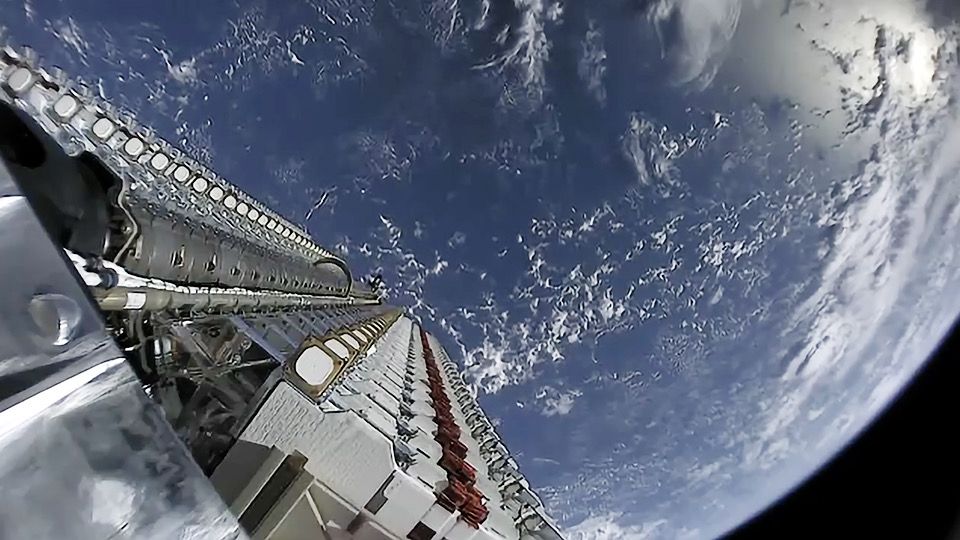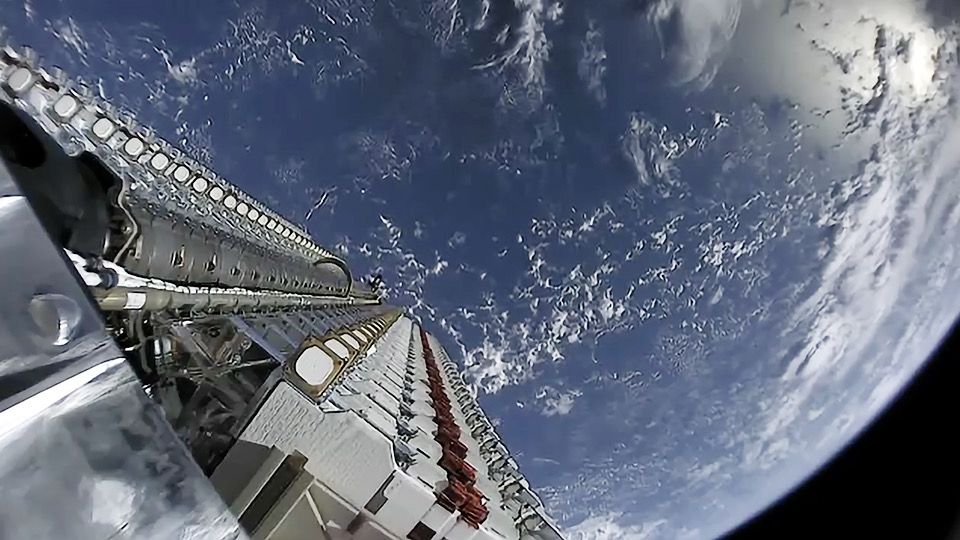
SpaceX’s burgeoning satellite-internet business is getting a legal challenge.
In late April, the U.S. Federal Communications Commission (FCC) approved a modification that SpaceX had made to the design of its Starlink megaconstellation, which beams broadband service down using satellites in low Earth orbit (LEO).
That modification, which SpaceX proposed in April 2020, applies to a license that the FCC has already granted. It moves the operating altitude for more than 2,800 future Starlink satellites much lower, from between 680 miles and 810 miles (1,100 to 1,300 kilometers) to around 340 miles (550 km) — the same patch of LEO that houses currently active Starlink craft. (SpaceX has launched more than 1,700 Starlink satellites to date, the vast majority of them to that 340-mile height.)
Related: SpaceX’s Starlink satellite megaconstellation launches in photos
Approval of the modification isn’t sitting well with two other players in the satellite-communications field. Last week, both Dish Network Corp. and Viasat filed appeals with the United States Court of Appeals for the District of Columbia Circuit, asking that the approval order be deemed unlawful and set aside.
Dish’s appeal characterizes the FCC approval as “arbitrary, capricious and unreasoned” and asserts that it contravenes both the agency’s own rules and the U.S. Constitution.
The approval order “delegates to SpaceX a part of the FCC’s own statutory responsibility to ensure that SpaceX’s own operations do not cause unacceptable interference, and contracts out another part of that responsibility to the ITU, without any substantive oversight by the FCC, all in violation of the Constitution’s Article I and the nondelegation doctrine,” the appeal states.
The ITU is the International Telecommunication Union, a United Nations agency that, among other duties, manages the world’s satellite radio-frequency spectrum.
Viasat’s appeal also describes the FCC approval as arbitrary, capricious and contrary to the law. For example, the document argues that the order violates both the National Environmental Policy Act (NEPA) and the FCC’s NEPA implementing regulation, which is known as 47 C.F.R. § 1.1307(c).
Viasat “faces a series of harms from the Order, including a risk of collisions with debris attributable to SpaceX’s satellite constellation; the expenditure of time and resources to avoid collisions with or interference from SpaceX’s satellites or associated debris; and competitive injury from SpaceX’s use of its environmentally irresponsible constellation to compete directly with Viasat in the market for satellite broadband services,” the appeal states.
The Dish and Viasat actions are far from unprecedented; many FCC decisions get appealed, a former FCC official told Space.com.
Courts usually give the FCC broad discretion in its decision-making, added the former official, who did not wish to be named. But that pattern may not hold in this case, especially given Viasat’s invocation of NEPA — an act that the FCC hasn’t had to deal with all that much to date.
Generally speaking, the courts “like NEPA and have given it a lot of leeway over the years,” the former official said. “It’s become a very important part of the government process, both in terms of regulation and also for government contracting.”
The D.C. appeals court will likely decide in the next few weeks whether to issue a hold on Starlink launches, this person added. And a denial of the appeals would probably not be the last word on the issue.
“Even if the courts don’t block SpaceX now, I just find it difficult to believe that at some point in the next few years there isn’t some major halt put on the launch of these things,” the former FCC official said. “There are just a lot of plans, and they’re not at all coordinated in a meaningful way.”
Starlink is already providing internet service in some areas, as part of a beta test program. But SpaceX still aims to loft many more of the satellites: The company already has FCC approval to launch 12,000 Starlink spacecraft, and it has filed paperwork with the ITU for up to 30,000 more. (SpaceX did not immediately respond to a request for comment.)
Other companies aim to build broadband megaconstellations in LEO as well. For example, OneWeb has already launched 218 internet satellites for its network, which is envisioned to consist of nearly 650 spacecraft initially. And Amazon is planning to assemble a 3,200-strong constellation of its own called Project Kuiper, though none of those satellites have launched to date.
The former FCC official described the current situation as a new space race, a push “to see who can get as much hardware into outer space before some governmental body — whether it’s U.S courts or the ITU or someone else — says ‘No, we’re putting a halt on this for a few years until we figure all this out.'”
Mike Wall is the author of “Out There” (Grand Central Publishing, 2018; illustrated by Karl Tate), a book about the search for alien life. Follow him on Twitter @michaeldwall. Follow us on Twitter @Spacedotcom or Facebook.



